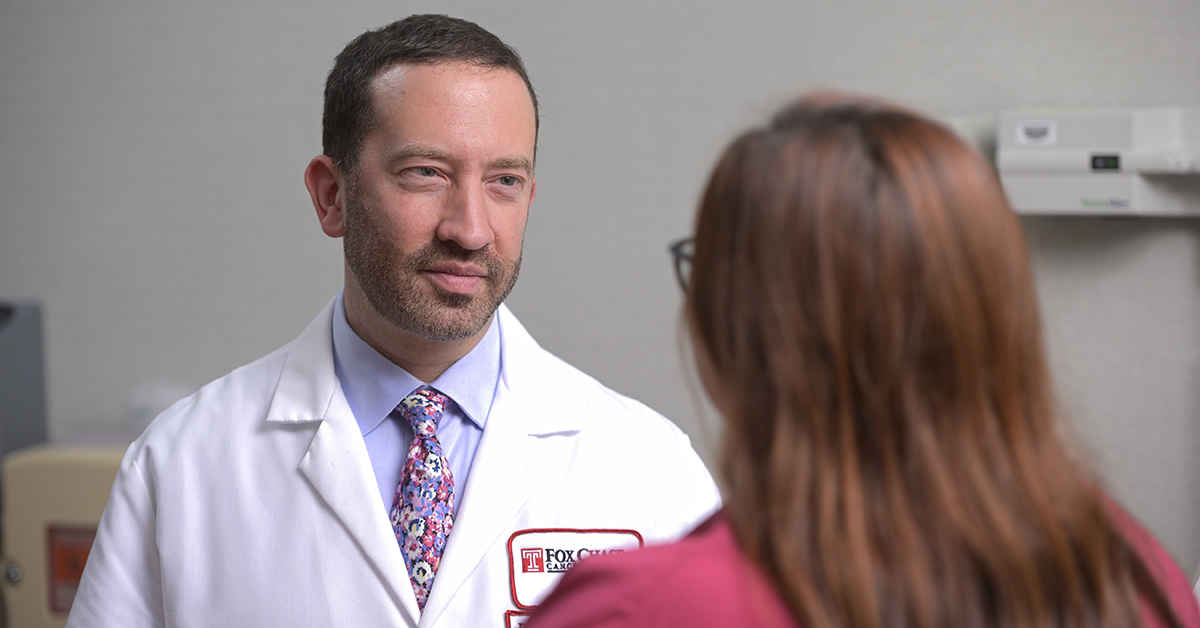
You’ve Found a Breast Lump: Now What?
-
Finding a lump in your breast can be frightening. For most women, discovering an unusual growth or mass immediately brings worries of breast cancer.
But here’s the first thing you should know about breast lumps: They aren’t unusual. “Palpable lumps, or lumps that you or your doctor can feel, are very common, particularly in premenopausal women,” explained Catherine Tuite, MD, a breast radiologist at Fox Chase Cancer Center.
“Even though most breast lumps aren’t cancerous, it’s always a good idea to have lumps checked out just in case, especially if it’s the first lump you’ve ever found, or if the lump doesn’t go away within a week or two after your period.”
Here are some more important things to know about breast lumps, and what to do if you find one.
Beyond breast tumors
There are many different kinds of breast lumps, but most of these lumps have one thing in common: They’re usually not cancerous tumors. The majority of lumps turn out to be harmless, or benign, masses or growths. These include:
- soft, fluid-filled lumps that can feel tender, especially before your period.
- rubbery lumps that move around under the skin and are usually painless.
Fibrocystic changes—painful, lumpy breasts that often get worse before your period.
Benign lumps can also develop from fatty tissue deposits or from breastfeeding, when sacs filled with milk form cysts. You can even get a lump from an injury, such as when your breast gets bruised or after breast surgery.
Know your normal
Breast lumps come in all shapes, sizes, and textures. They can come and go too, especially in premenopausal women. A cyst can become more tender or noticeable during one part of your menstrual cycle, for instance, and then be less so after your period ends. A lump may be more noticeable after significant weight loss.
Checking your breasts regularly can help you get a sense of what feels normal for your body—and make it easier to notice if something seems different. It’s also important to watch out for other possible symptoms of breast cancer, including changes like swelling, redness, nipple discharge, itching, or focal pain. “Anything that feels unusual for you, that’s the key,” Tuite said.
What to do if you find a lump
Always let your primary care provider know if you notice a new or unusual lump, or other changes in your breasts. “It’s not an emergency, but you’d want to see your doctor within a week or two,” Tuite said.
Remember, most breast lumps are benign. But the only way to know for sure if a lump isn’t cancerous is to have it examined. After physical examination, evaluation may include a diagnostic imaging test like a mammogram, which provides an x-ray image of your breast. An ultrasound might be recommended as the first test or after the mammogram.
If an imaging test doesn’t provide enough information about the lump, your doctor might recommend a biopsy. This procedure involves inserting a needle into the lump to collect a small sample of cells or tissue for testing.
Your health care team may recommend treatment options based on what your diagnostic test finds. If the lump turns out to be harmless, you may not need to do anything at all.
Diagnostic testing at Fox Chase
Having an imaging test for a breast lump can be a source of anxiety—and understandably so. At Fox Chase, our dedicated breast radiologists will conduct your test, review the images, and deliver your results personally the very same day, Tuite said. So, you can get answers—and peace of mind—as quickly as possible.
Learn more about breast screening at Fox Chase
To request an appointment fill out our online form or call 888-369-2427.
